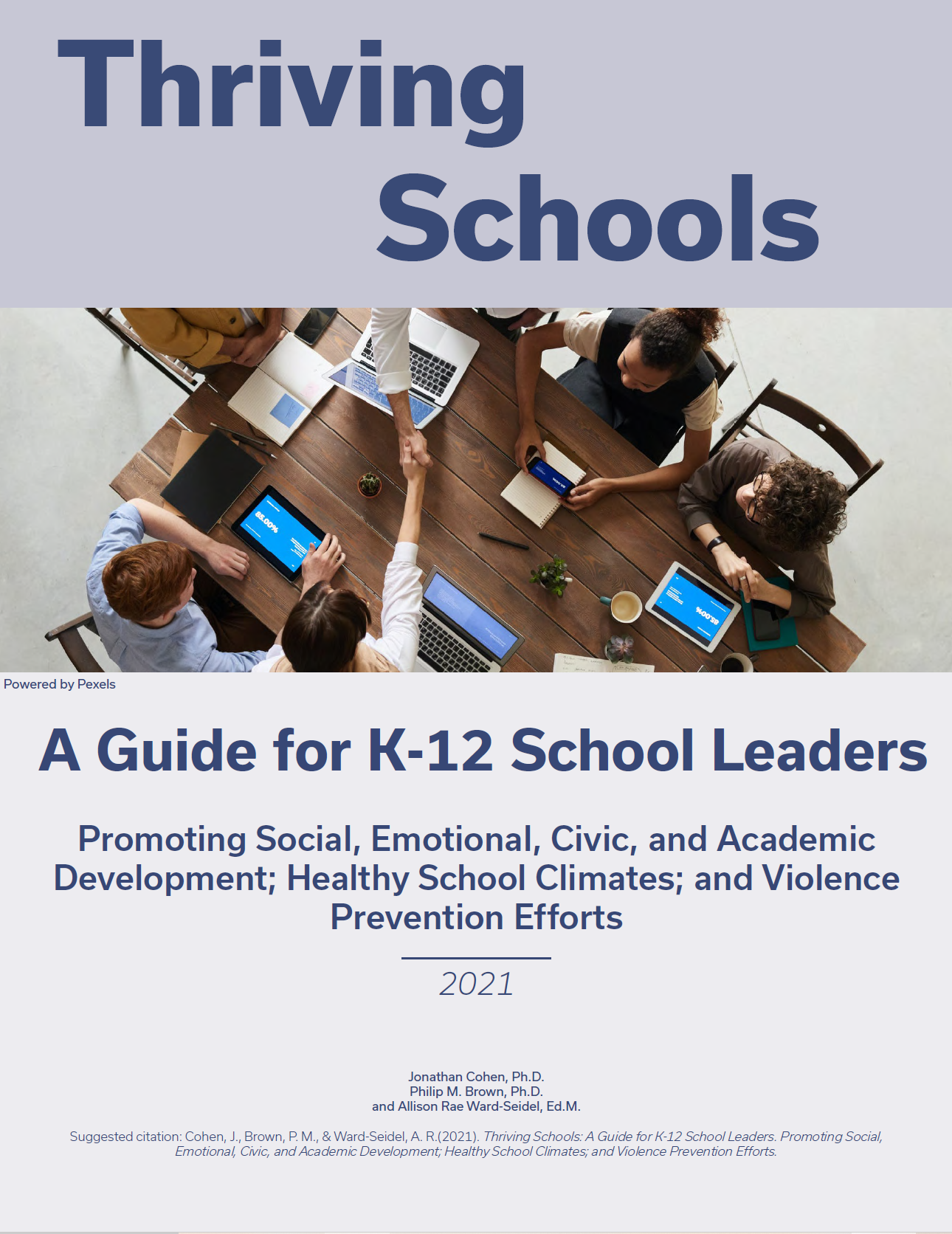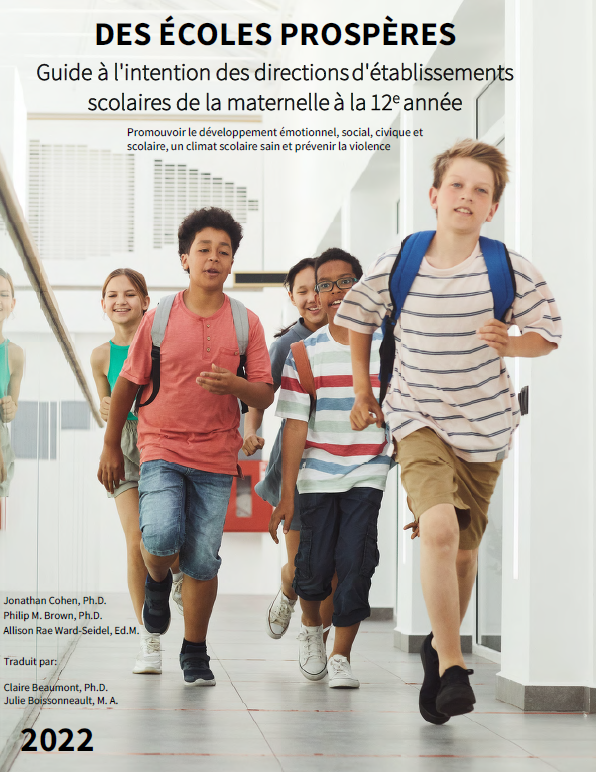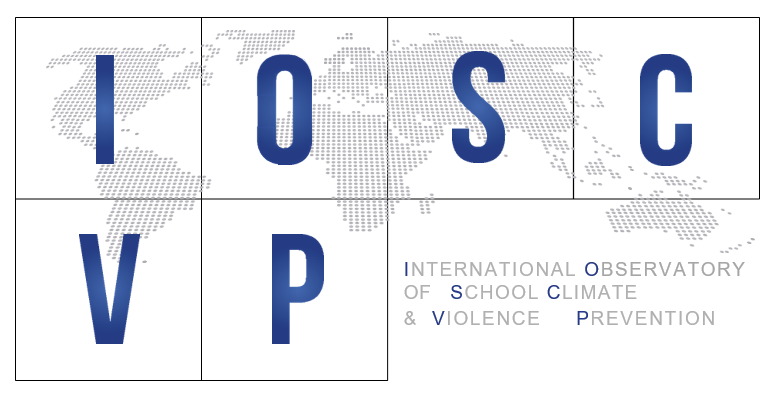Supporting an effective and sustainable school climate improvement process:
Readiness, guiding principles, tools, and resources
School climate improvement is an ongoing, iterative process in which educators, parents, students, and even community members learn and work together to further three foundational goals:
- Promoting social, emotional, civic, and academic learning.
- Creating even safer, more supportive, and engaging climates for learning.
- Fostering healthy and connected relationships.
There are two sets of resources available here:
- Thriving Schools: A Guide for K-12 School Leaders. Promoting Social Emotional, Civic and Academic Development, Healthy School Climates, and Violence Prevention [see below the version available for free download in English and French]. This Guide synthesizes research and best practices from a variety of fields: school improvement; social emotional learning; character education; mental health promotion; and school climate. This Guide is interactive if you have Adobe. The Guide includes a range of tools for school teams, such as the internal self-evaluation audits and recommended free resources for carrying out improvement initiatives (Appendix I, on page 87). The Data and Program Audits are designed to support school leaders considering current data practices and program effectiveness. Audits also provide ways to assess the usefulness and cohesiveness of improvement initiatives currently being used. In addition, the Guide includes the following resources:
-
- Resources that support school leaders being intentional (Appendix B)
-
- Resources that support school leaders being strategic (Appendix C)
-
- Resources that support school leaders being collaborative (Appendix D)
-
- Compendium of prosocial school/district road maps (Appendix E)
-
-
Understanding conditions of social trust (Appendix G)
-
Moving from a reactive to a practice stance (Appendix H)
-
resources for synthesizing academic, behavioral, and school climate data (Appendix L)
-
And, much more!
-


- Thriving Schools Readiness Tool that is designed to support school heads/Principals and members of their leadership teams to rapidly evaluate the school strengths and challenges in ways that support action planning.
Readiness refers to the extent to which an organization is both willing and able to implement a particular innovation (Drzensky et al., 2012; Rafferty, Jimmieson, & Armenakis, 2013; Weiner, Amick, & Lee, 2008; Weiner, 2009). All schools are “ready” to embark on an improvement process. But schools like people, always come with a series of strengths, goals, challenges and weaknesses. Understanding our current strengths, goals, and weaknesses is a necessary precursor to successful organizational change and is often embedded within larger program planning and implementation frameworks (Aarons, Hurlburt, & Horwitz, 2011; Damschroder et al., 2009; Greenhalgh et al., 2004; Powell et al., 2012). The Thriving Schools Readiness Tool presented here builds on the Shirley M. Hord work (Hord, 1990; Hord, Rutherford, Huling– Austin, & Hall, 1987) as well as the more recent work of Fixsen, Blasé, and their colleagues (Blase, van Dyke, & Fixsen, 2013; Fixsen et al., 2005) and the National School Climate Centers Readiness tool (Cohen, 2012).
Based on your school’s readiness evaluation, the Thriving Schools Guide offers a guiding process and a range of resources to build on current strengths and address challenges.
Please note: Your Readiness Tool responses may be used by researchers to understand measurement and/or school improvement experiences.
